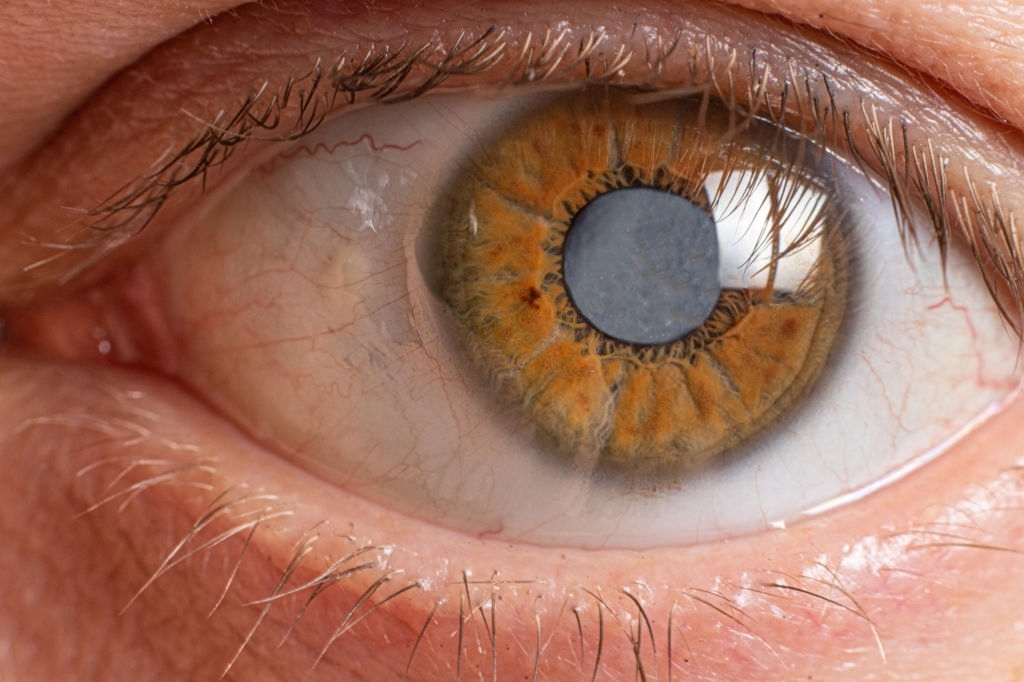NOTICE
ANSM - Last updated: 17/07/2017
Name of the medicinal product
OPHTACALMFREE 2%, eye drops in solution
Sodium Cromoglicate
framed
Please read this leaflet carefully before you start using this medicine because it contains important information for you.
You should always use this medication exactly as prescribed in this leaflet or by your doctor or pharmacist.
· Keep this leaflet. You might need to read it again.
· Ask your pharmacist for advice or information.
· If you experience any side effects, talk to your doctor, or your pharmacist. This also applies to any side effects not mentioned in this leaflet. See section 4.
· You should contact your doctor if you experience no improvement or feel less well after 7 days.
What is in this leaflet?
1. What is OPHTACALMFREE 2%, eye drops in solution and in which cases it is used?
2. What should I know before using OPHTACALMFREE 2% solution eye drops?
3. How to use OPHTACALMFREE 2%, eye drops in solution?
4. What are the possible side effects?
5. How to keep OPHTACALMFREE 2%, eye drops in solution?
6. Package contents and other information.
1. WHAT IS OPHTACALMFREE 2%, eye drops in solution AND IN WHAT CASES IS IT USED?
Pharmacotherapeutic group - Local anti-allergic, ATC code: S01GX01
OPHTACALMFREE 2%, eye drops in solution contains an active substance, sodium cromoglicate, having an antiallergic action.
This eye drops are indicated in adults and children over 15 years of age in case of seasonal or non-seasonal allergic conjunctivitis (recognizable by swollen eyes and / or eyelids, red eyes, stings or tears).
You should contact your doctor if you experience no improvement or feel less well after 7 days of treatment.
2. BEFORE YOU USE OPHTACALMFREE 2%, eye drops in solution?
Never use OPHTACALMFREE 2%, eye drops in solution:
· if you are allergic to sodium cromoglicate or any of the other ingredients of this medication mentioned in section 6.
Warnings and Precautions
Talk to your doctor or pharmacist before using OPHTACALMFREE 2%, eye drops in solution.
NEVER LEAVE TO CHILDREN.
Do not exceed recommended dosage.
If there is no improvement as in the case of symptoms persisting beyond 7 days of treatment, take a medical opinion.
In case of concomitant treatment with another eye drops, wait 15 minutes between each instillation.
Wash your hands thoroughly before proceeding with instillation.
Carefully close the bottle after use.
children
In children under 15 years of age, medical advice is required.
Other drugs and OPHTACALMFREE 2%, eye drops in solution
The effectiveness of eye drops may be affected by the simultaneous instillation of another eye drops. You should space the uses of these eye drops for 15 minutes.
Inform your doctor or pharmacist if you are taking, have recently taken or may take any other medicines.
OPHTACALMFREE 2%, eye drops solution with food, beverages and alcohol
Not applicable.
Pregnancy and breast feeding
As a precaution, it is preferable not to use OPHTACALMFREE 2%, eye drops in solution during pregnancy.
If you are pregnant or breastfeeding, think you may be pregnant or plan a pregnancy, ask your doctor or pharmacist for advice before taking this medicine.
Driving and using machines
Be careful. Transient visual discomfort may be experienced after administration of eye drops. In this case, you must wait until the symptoms are over to drive a vehicle or use a machine.
OPHTACALMFREE 2%, eye drops solution contains {name the excipient (s)}
Not applicable.
3. HOW TO USE OPHTACALMFREE 2%, eye drops in solution?
Always use this medication exactly as prescribed in this leaflet or as directed by your doctor or pharmacist. Check with your doctor or pharmacist if in doubt.
Dosage
Adults and children over 15 years of age: depending on the severity of the symptoms, instil 1 drop in each affected eye 2 to 6 times a day, at regular intervals.
Use in children
In children under 15 years of age, prior medical advice is required.
Space the instillations.
In case of concomitant treatment with another eye drops, wait 15 minutes between each instillation.
Never exceed the recommended dose.
Administration mode
Ophthalmic pathway
DO NOT INJECT, DO NOT SWALLOW.
Eye drops should not be administered as peric or intraocular injection.
Wash your hands thoroughly before proceeding with instillation.
Avoid contact of the tip of the vial with the eye or eyelids.
OPHTACALMFREE 2%, eye drops solution has a patented pump mechanism and is used safely and simply.
When using this eye drops, follow these steps:
|
Bottle with laterally actuated distributor sleeve:
|
|

|
1. Wash your hands before using OPHTACALMFREE 2%, eye drops in solution and hold the bottle as shown.
|
|

|
2. Remove the protective cap from the bottle cap by turning it before each use. Avoid contact between the tip of the vial and your fingers or other surfaces to avoid contamination of the solution.
|
|

|
3. Turn the bottle upside down and tilt your head back slightly. Gently pull your lower eyelid down with a finger of your free hand, hold the bottle in an upright position above the eye and press the pump mechanism at the same time to apply a drop into your eye. Avoid touching the surface of the eye with the tip of the bottle to avoid injury. Close the eye and gently rotate it to spread the solution evenly over the surface of your eye.
|
|

|
4. Immediately after use, shake the bottle to drop any residual drops and replace the protective cap on the dry mouth of the bottle.
The bottle can be completely emptied of the stated filling volume. Due to the design of the vial, a small amount of solution remains in the vial.
|
|
Flask with ergonomic sleeve thumb support:
|
|
Before the first use , about 15 pressure movements are required to activate the pumping mechanism and obtain the required amount of solution (Fig.1). Hold the bottle upside down as shown in the diagram. This will no longer be necessary .
|
|

|
|
 Before each use, wash your hands, remove the protective cap from the bottle cap (Fig.2). Avoid any contact with the fingers of the bottle tip. Before each use, wash your hands, remove the protective cap from the bottle cap (Fig.2). Avoid any contact with the fingers of the bottle tip.
|
|
|
|
Figure 3 describes how to hold the product safely and comfortably.
 Place the thumb on the ergonomic holder specially designed for this purpose and 2 fingers at the base of the bottle. Place the thumb on the ergonomic holder specially designed for this purpose and 2 fingers at the base of the bottle.
|
|
|
|
For use, tilt the head slightly backwards and hold the dropper bottle over your eye as shown in Figure 4.
With the index finger of the free hand, pull the lower eyelid slightly down. The space which is then formed is called the conjunctival sac.
Be sure to hold the dropper bottle upright as much as possible. Avoid contact with the fingers or the eye.
|
|

|
In order to deposit a drop of OPHTACALMFREE 2%, eye drops in solution in the conjunctival sac, press briefly but firmly on the bottle. Thanks to the automatic dosing, a drop is released exactly at each pumping. Now close your eye and slowly move it in all directions to distribute the ophthalmic solution on the surface of the eye optimally.
Close the bottle cap with the cap immediately after use.
If you feel that the effect of OPHTACALMFREE 2%, eye drops in solution is too strong or too weak, talk to your doctor or pharmacist.
Frequency of Administration
The recommended dose is 1 drop in each eye, 2 to 6 times daily, at regular intervals.
Duration of treatment
Do not prolong treatment beyond 7 days without medical advice: in the absence of improvement as in the case of persisting symptoms, take a medical opinion.
If you used more OPHTACALMFREE 2%, eye drops in solution than you should have
Rinse with plenty of water in case of overdose.
Immediately consult your doctor or pharmacist.
If you forget to use OPHTACALMFREE 2%, eye drops in solution
Do not take a double dose to make up for a forgotten dose. but simply continue your treatment.
If you stop using OPHTACALMFREE 2%, eye drops in solution
Not applicable.
If you have any further questions on the use of this medication, ask your doctor or pharmacist.
4. WHAT ARE POSSIBLE SIDE EFFECTS?
Like all medicines, this medicine may cause side effects, although not everybody gets them.
The following effects may occur:
· allergic reactions to eye drops,
· a temporary visual discomfort after the application of the eye drops.
Declaration of side effects
If you experience any side effects, talk to your doctor or pharmacist. This also applies to any side effects not mentioned in this leaflet. You can also report adverse reactions directly via the national reporting system: National Agency for the Safety of Medicines and Health Products (ANSM) and network of Regional Centers of Pharmacovigilance
By reporting adverse reactions, you are helping to provide more information about the safety of the drug.
5. HOW TO STORE OPHTACALMFREE 2%, eye drops in solution?
Keep this medicine out of the reach and sight of children.
Do not use this medicine after the expiry date which is stated on the outer packaging after EXP. The expiry date refers to the last day of that month.
After first opening of the bottle: to keep maximum 3 months.
Once this time has passed, you should no longer use this eye drops.
Note the opening date in plain text on the packaging.
No special storage conditions.
Do not use this medication if you notice any signs of deterioration.
Do not throw any medicines into drains or rubbish. Ask your pharmacist to remove any medications you are no longer using. These measures will help protect the environment.
6. PACKAGE CONTENTS AND OTHER INFORMATION
What OPHTACALMFREE contains 2%, eye drops in solution
· The active substance is:
Sodium Cromoglicate ............................................... .................................................. ...... 2 g
For 100 ml of solution.
· The other component is:
Water for injections.
What is OPHTACALMFREE 2%, eye drops in solution and contents of the pack
This medication is in the form of an eye drops solution; box of 1 vial of 10 ml with pump equipped with a filter or bottle provided with a distributor sleeve with lateral actuation.
Not all pack sizes may be marketed.
Marketing Authorization Holder
CHAUVIN LABORATORY
416 RUE SAMUEL MORSE - CS99535
34961 MONTPELLIER CEDEX 2
Marketing Authorization Operator
CHAUVIN LABORATORY
416 RUE SAMUEL MORSE - CS99535
34961 MONTPELLIER CEDEX 2
Maker
CHAUVIN LABORATORY
ZI RIPOTIER HAUT
07200 AUBENAS
or
DR GERHARD MANN CHEM. PHARM. FABRIK GMBH
BRUNSBÜTTELER DAMM, 165/173
13581 BERLIN
GERMANY
Names of the medicinal product in the Member States of the European Economic Area
Not applicable.
The last date on which this leaflet was revised is:
[to be completed later by the holder]
{month YYYY}.
Other
Detailed information on this medicine is available on the ANSM website (France).
Health Education Council:
a) What is an allergy, what is an allergic reaction?
Allergy is an overreaction of our body to substances it considers harmful, allergens. Allergens are the factors and substances triggering allergy and associated disorders.
During repeated contact of the body with the allergen, an allergic reaction is triggered.
The allergic reaction refers to all symptoms appearing a few minutes or hours after exposure to allergens. These allergens come from plants, animal hair, food, dust mites, molds or are substances of occupational origin.
This allergic reaction causes the release in the body of substances such as the histamine responsible for the disorders felt.
Like any allergic disease, it is important to consult a doctor at least once. IT SHALL DETERMINE IN PARTICULAR THE NEED TO CARRY OUT AN ALLERGOLOGICAL BALANCE SHEET.
b) How to recognize allergic conjunctivitis?
A redness of the eye and the inside of the eyelids accompanied by itching, swelling and tearing of the eye are signs of allergic conjunctivitis.
This condition often accompanies allergic rhinitis (sneezing, runny nose, stuffy nose) because they are triggered by the same allergens (pollens, mites, animal hair ...).
c) Some practical tips
· Do not rub your eyes, even if they irritate you because after a temporary relief, this friction can only aggravate the situation.
· Gently rinse your eyes with clear water or with a sterile washing solution to remove pollen and so relieve you.
· Temporarily remove the makeup. The healing of conjunctivitis or reappearance during a new application may make it possible to identify the responsible substance. The presence of an eye allergy must lead to be vigilant in the choice of its cosmetics.
· If you wear contact lenses, it is best to remove them for the duration of the treatment with eye drops.
d) In case of acute eye pain, sensation of decreased vision or visual blur, consult your doctor.
e) Prevention of recurrences
· Removing the allergen (is foreclosure) is the measure of choice to suppress or reduce the symptoms of allergy.
· For allergens in the home, measures to reduce the presence of allergens are essential:
· The mattress should be completely surrounded by a plastic dust mite cover as well as the pillows. The bed base, unless it is in slats or metal, shall be surrounded by a plastic. Any bedding should be washed twice a month at 60 ° C if possible.
· The room should be ventilated and cleaned regularly.
· On the floor, you will avoid bed runs and carpets.
· Avoid pets.
· During the pollen season, it is possible to reduce exposure to pollen.
· In your garden, diversify the plantations avoiding the most allergenic species (cypress, thuja, birch ...).
· Avoid mowing the lawn yourself during the pollen season.
· Garde preferably with glasses and protective mask.
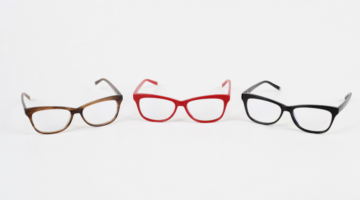
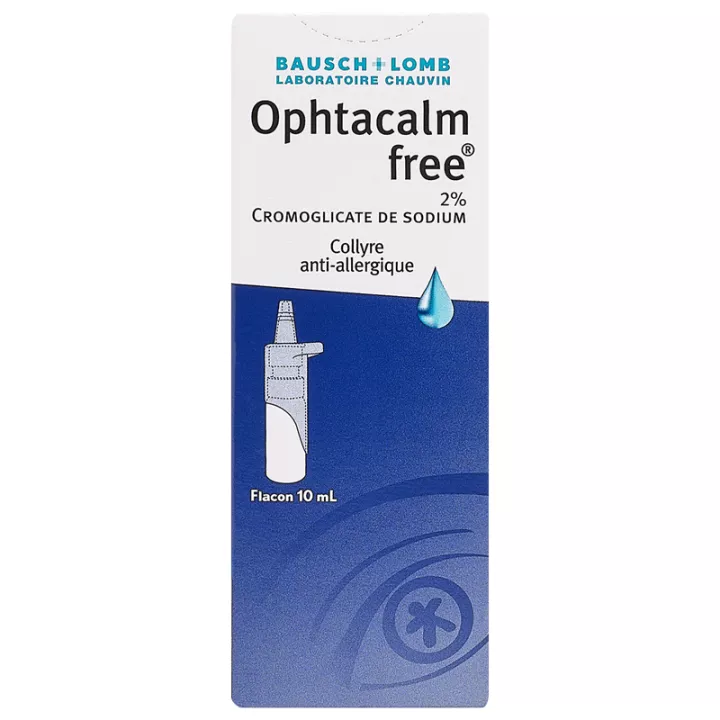


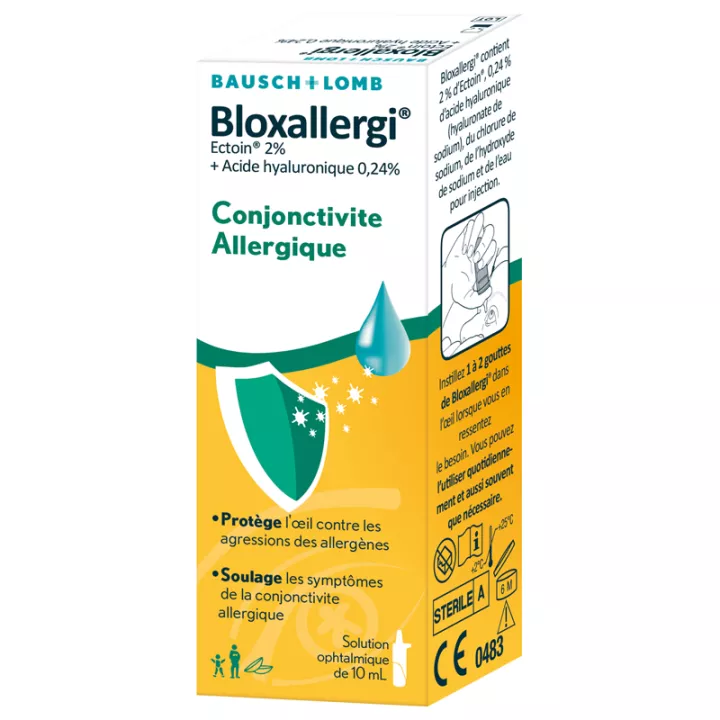
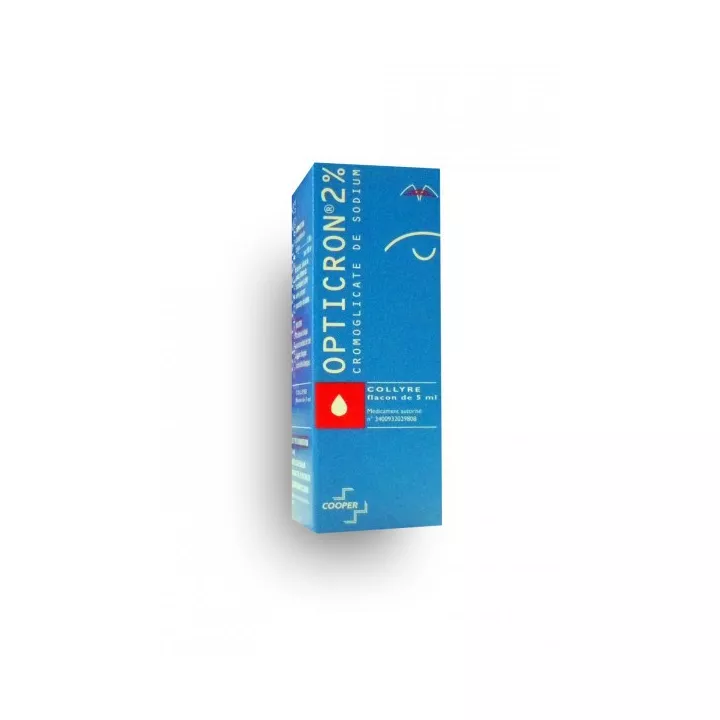
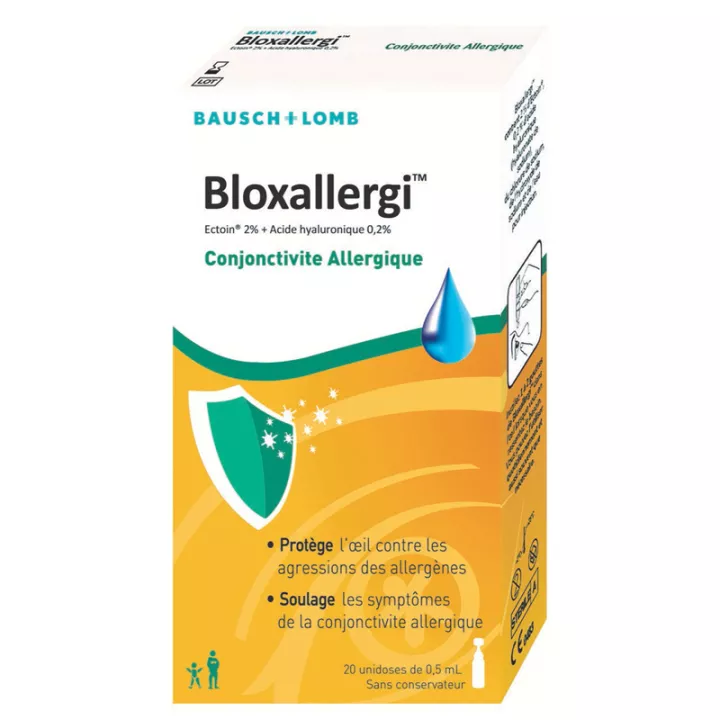





 Before each use, wash your hands, remove the protective cap from the bottle cap (Fig.2). Avoid any contact with the fingers of the bottle tip.
Before each use, wash your hands, remove the protective cap from the bottle cap (Fig.2). Avoid any contact with the fingers of the bottle tip. Place the thumb on the ergonomic holder specially designed for this purpose and 2 fingers at the base of the bottle.
Place the thumb on the ergonomic holder specially designed for this purpose and 2 fingers at the base of the bottle.
